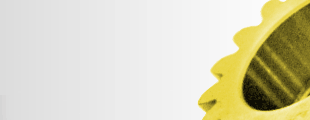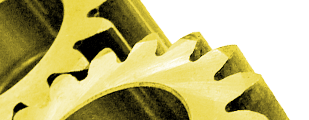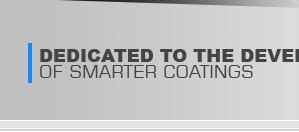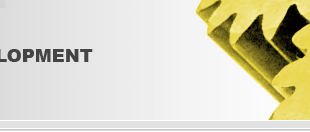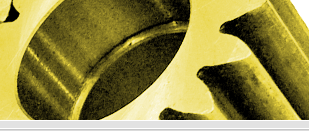Engineering Information
Click on links below to view engineering specification sheets:
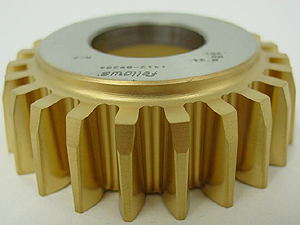
TiN
Key Benefits to using Titanium Nitride (TiN)
- Good baseline wear resistance with strong results over uncoated geometries. A well-rounded player.
- Maintains sharp edges or corners.
- Prevents galling, seizing or cold-welding. Even more effective as a primary 'counter face' barrier.
- Provides an attractive metallic gold color. Uniform in appearance, color, and texture.
- Safe for surgical devices and food processing. FDA Approved.
- Decreases friction and allows improved surface temperatures.
- Resists corrosion though not recommended as a corrosion solution without special pretreatment.
- Withstands high temperatures.
Key Features to using Titanium Nitride (TiN)
- Off the scale high hardness (Rockwell C).
- Strong lubricity.
- Resistant to many chemicals.
- Heat resistant.
- Creates a non-stick surface.
- Non-toxic to the environment during application, use, and disposal.
- 100 % Environmentally friendly process.
Process: |
Vacuum Deposited Coating using Physical Vapor Deposition (PVD). |
Appearance: |
Metallic Gold in color |
Thickness: |
Ranges from 0.5 to 8 microns. Typical applications are 2 to 3 microns |
Uniformity: |
Coating conforms uniformly to the substrate. Unlike electroplating operations, no appreciable corner buildup occurs. Coating "throws" well into features with a taper of one to 5 diameters of depth. |
Hardness: |
In excess of 80 Rc over 2400HV. Harder than traditionally applied hard chrome. |
Adhesion: |
The coating forms a metallurgical bond to the substrate that will not flake, blister, chip or peel. In fact, the coating is actually implanted slightly into the surface layer of the substrate. |
Coefficient of Friction: |
TiN maintains a low coefficient of friction around .4 |
Non-stick: |
TiN is an excellent non-stick surface against most other materials. |
Toxicity: |
Non-toxic. Meets FDA guidelines and has been approved for use in numerous medical/surgical devices, including implants. Meets requirements of FDA and USDA for food contact. |
Temperature Resistance: |
Begins to oxidize around 600°C. (1100°F.) at atmospheric conditions exposed to air. |
Melting Point: |
2930°C. |
Deposition Temperature: |
Ranges from 200 to 800°C. Standard process is 450°C. |
Resistance: |
Highly inert to acids, bases, solvents, and caustics, except peroxides |
TiCN
Key Benefits to using Titanium Carbonitride (TiCN)
- Provides an exceptional finish when machining tough and gummy materials.
- Maintains sharp edges or corners with increased toughness and impact resistance.
- Prevents galling, seizing or cold-welding. Even more effective as a primary or secondary 'counter face' barrier.
- Provides an attractive mauve (red) finish. Uniform in appearance, color, and texture.
- Incredible toughness allows for exceptional properties in fine blanking, stamping, and forming.
- Decreases contact friction and allows for more aggressive geometries and machine settings.
- Safe for machining medical equipment and surgical devices. Highly productive in Stainless applications.
- Withstands high temperatures slightly less than TiN.
Key Features to using Titanium Carbonitride (TiCN)
- Hardness with extreme toughness.
- Strong lubricity with lowest coefficient of friction.
- Resistant to many chemicals.
- Heat resistant.
- Creates a non-stick surface.
- Non-toxic to the environment during application, use, and disposal.
- 100 % Environmentally friendly process.
Process: |
Vacuum Deposited Coating using Physical Vapor Deposition (PVD). |
Appearance: |
Mauve Red in color representing ideal carbon content |
Thickness: |
Ranges from 0.5 to 8 microns. Typical applications are 2 to 3 microns |
Uniformity: |
Coating conforms uniformly to the substrate. Unlike electroplating operations, no appreciable corner buildup occurs. Coating "throws" well into features with a taper of one to 5 diameters of depth. |
Hardness: |
In excess of 80 Rc over 3000HV. Harder than TiN and electroplated hard chrome. |
Adhesion: |
The coating forms a metallurgical bond to the substrate that will not flake, blister, chip or peel. In fact, the coating is actually implanted slightly into the surface layer of the substrate. |
Coefficient of Friction: |
TiCN maintains a low coefficient of friction around .2 |
Non-stick: |
TiCN is an excellent non-stick surface against most other materials. |
Toxicity: |
Non-toxic material used in forming components for medical and pharmaceutical applications. |
Temperature Resistance: |
Begins to oxidize around 600°C. (1100°F.) at atmospheric conditions exposed to air. |
Melting Point: |
1950°C. |
Deposition Temperature: |
Ranges from 200 to 800°C. Standard process is 450°C. |
Resistance: |
Highly inert to acids, bases, solvents, and caustics, except peroxides |
TiAIN
Key Benefits to using Titanium Aluminum Nitride (TiAlN)
- Wear resistance.
- Maintaining sharp edges or corners.
- Prevent galling, seizing or cold-welding.
- Provides an attractive metallic gold color.
- Safe for surgical devices and food processing.
- Decreases friction.
- Resists corrosion.
- Withstands high temperatures.
Key Features to using Titanium Aluminum Nitride (TiAlN)
- Extreme hardness and heat resistance.
- Strong lubricity.
- Resistant to many chemicals.
- Creates a non-stick surface.
- Non-toxic to the environment during application, use, and disposal.
- 100 % Environmentally friendly process.
Process: |
Vacuum Deposited Coating using Physical Vapor Deposition (PVD). |
Appearance: |
Mouse Gray in color |
Thickness: |
Ranges from 0.5 to 8 microns. Typical applications are 1 to 3 microns |
Uniformity: |
Coating conforms uniformly to the substrate. Unlike electroplating operations, no appreciable corner buildup occurs. Coating "throws" well into features with a taper of one to 5 diameters of depth. |
Hardness: |
In excess of 80 Rc. Harder than traditionally applied hard chrome. |
Adhesion: |
The coating forms a metallurgical bond to the substrate that will not flake, blister, chip or peel. In fact, the coating is actually implanted slightly into the surface layer of the substrate. |
Coefficient of Friction: |
TiAlN maintains a low coefficient of friction of around .4 |
Non-stick: |
TiAlN is an excellent non-stick surface against most other materials. |
Toxicity: |
Non-toxic. Meets FDA guidelines and has been approved for use in numerous medical/surgical devices. |
Temperature Resistance: |
Begins to oxidize around 900°C (1650°F.) in atmospheric conditions exposed to air. |
Melting Point: |
2930°C. |
Deposition Temperature: |
Ranges from 200 to 800°C. Standard process is 450°C. and provides the toughest coating. |
Chemical Resistance: |
Highly inert to acids, bases, solvents, caustic, etc. |
AITiN
CrN
Cathodic Arc Technology Brief
Cathodic Arc Physical Vapor Deposition (a type of PVD)
PVD process simply:
The PVD process uses vacuum, target material (e.g. Titanium), heat, electrical potential and gasses such as nitrogen to deposit a coating on the substrate. The substrate is put into the chamber and connected to electrical source to enable a potential voltage difference. The chamber is evacuated and heated to high temperatures (100-600°C). A small amount of gas (Nitrogen for TiN) is bled into the PVD chamber. A plasma cloud is then ignited which evaporates the target material and deposits the coating on the substrate in a controlled and precise manner. Different target materials and gasses are used to create different coatings with different properties. These PVD coatings can increase the Rockwell 'C' hardness of steel up to 4 times that of plain steel as well as reduce the coefficient of friction.
Commercial PVD coatings are simply a product of a metal and a gas excited under vacuum with heat and electricity to combine in a way they can not under atmospheric conditions. The metal cathodes inside the chamber on the inner walls facing the parts and the corresponding plasma field created from gas precisely bled into the chamber are the main constituents of the process.
For example, a Titanium plate in an Argon (inert gas) and Nitrogen plasma field creates Titanium Nitride or the gold colored TiN. A Chromium metal plate and Nitrogen plasma field produce CrN. Mixed alloys (Titanium and Aluminum) plus Nitrogen create TiAlN. The difference between AlTiN and TiAlN is only the concentration of Ti to Al where the highest one comes first. AlTiN has more Aluminum while TiAlN has more Titanium.
The C in coatings (TiCN versus TiN) stands for Carbon that is passed into the plasma field using a simple gas like Acetylene (C2H2). The molecule is cracked; hydrogen evacuated leaving the Carbon behind to interact with the Nitrogen and Ionized Metal creating titanium carbonitride (TiCN).
The only difference between TiCN and TiN is the carbon from an additional process gas. The effect if controlled correctly creates a much lower coefficient of friction material with increased toughness. With carbon in the mix TiCN is a new material with its own properties now different than TiN.
Layering these materials (alternating Tin and TiCN) creates a composite structure with enhanced properties. Many little layers are currently referred to 'nano layers' (10-9 meter in thickness) while older or specific processes call for monolithic or mono-layered materials. Mono-layered material is a single layer of a specific material while multi-layered or nano-composite structures have a few to dozens of specifically tailored layers of material to enhance certain material properties including controlling internal stresses.
In summary: Titanium or other certain metals are vaporized from a solid source (cathode) by means of an electric arc to form a plasma vapor. The resulting, highly charged, metal ions from the plasma are then mixed with inert gas such as nitrogen. The positively charged plasma is attracted to the negatively charged substrate (object being coated) producing a thin, uniform, colored metallic film on its surface.
"At DCT we differentiate ourselves from our competition with product quality, rapid delivery, and by providing many levels of world class support services. Our flexibility in addressing real time engineering solutions is one of our strongest competitive advantages. When you seek our support, DCT provides trained coatings professionals with a wide array of manufacturing experiences. We provide more than thin layered products. Dayton Coating Technologies provides Thin Coating Solutions to improve our customers performance and profitability." George Korenyi-Both, President and Founder of Dayton Coating Technologies, LLC (1999).
Coating Applications Support
Engineers are available to review applications with you personally, make recommendations and visit on site to evaluate specific uses. This way, the most appropriate coating is selected maximizing your competitive advantage.
Development of Differentiated Products
Often customers with niche applications prefer the use of proprietary coating configurations. These coatings have specific performance qualities in certain areas. We can support any product differentiation initiative through advanced coating research, testing, and development.
Coating Related Production Testing
The regular testing and evaluation of coating performance is an important step to ensuring product quality. Our state of the art tribological surface study laboratory is ready and available. We certify and test every run, every day for all of our customers components. Additional testing capability is available. The development of component specific tests, DOE, program management, and PPAP submissions are no problem. Our experienced engineers and scientists will work with your organization seamlessly to interpret and develop test standards/equipment.
|

